Identifying Opportunities Using SAM.gov’s Data Bank
Resources and Insight | 6 Min Read
With over 135 federal agencies in existence, the government has tremendous purchasing power in the federal marketplace. Some agencies may be purchasing your products and services in bulk, and some maybe not so much. It’s up to you to ensure that you’re doing your part in conducting market research to identify potential buyers in agencies. Thankfully, GSA has some tools to help you conduct market research. SAM.gov’s Data Bank tool helps you focus your marketing efforts and understand federal purchasing trends.
We’ve covered what SAM.gov is and how to use SAM.gov for making, receiving, managing federal awards, and more. Now that you hopefully have a basic grasp on SAM.gov, let’s cover how to use the Data Bank tool to run reports.
What is the Data Bank in SAM.gov?
Contractors and prospective contractors with a SAM.gov registration can use the Data Bank tool to:
- Research which federal agencies and departments are buying your products/services
- Track how much agencies are buying and if they have awarded any small business set-asides
- Identify more opportunities to compete in the federal marketplace
- Understand your competition
The idea is you can use this information to help create a plan for your business and have a better grip on the marketplace, so you know what to expect.
It’s important to note that this tool was migrated over from fps.gov which still has some functionality from older reports. If you need to search for contract data or specific contracts, you can visit fdps.gov. These search and data entry functions will be migrated to SAM.gov in the future.
How to Run Standard Reports in SAM’s Data Bank
Standard reports contain information about contract activity. They’re structured to meet the demands of both government and public users. Depending on the report, you have the option to utilize filters to locate direct information of data. There are 36 standard contract data reports in the data bank that will provide insight in federal contracting activities. Let’s complete a step-by-step run-through on how to obtain reports.
After signing into your SAM.gov account, navigate to the “Data Bank” tab in between “Search” and “Data.” Once you’re there, you will notice several options on the left side of the screen. Select “Contract Data” and “Standard” and scroll down the page to find the alphabetically listed reports. Reports listed as “Anomaly” reports either give information on anomalous circumstances or have anomalies within the data and will include this information within the report descriptions.
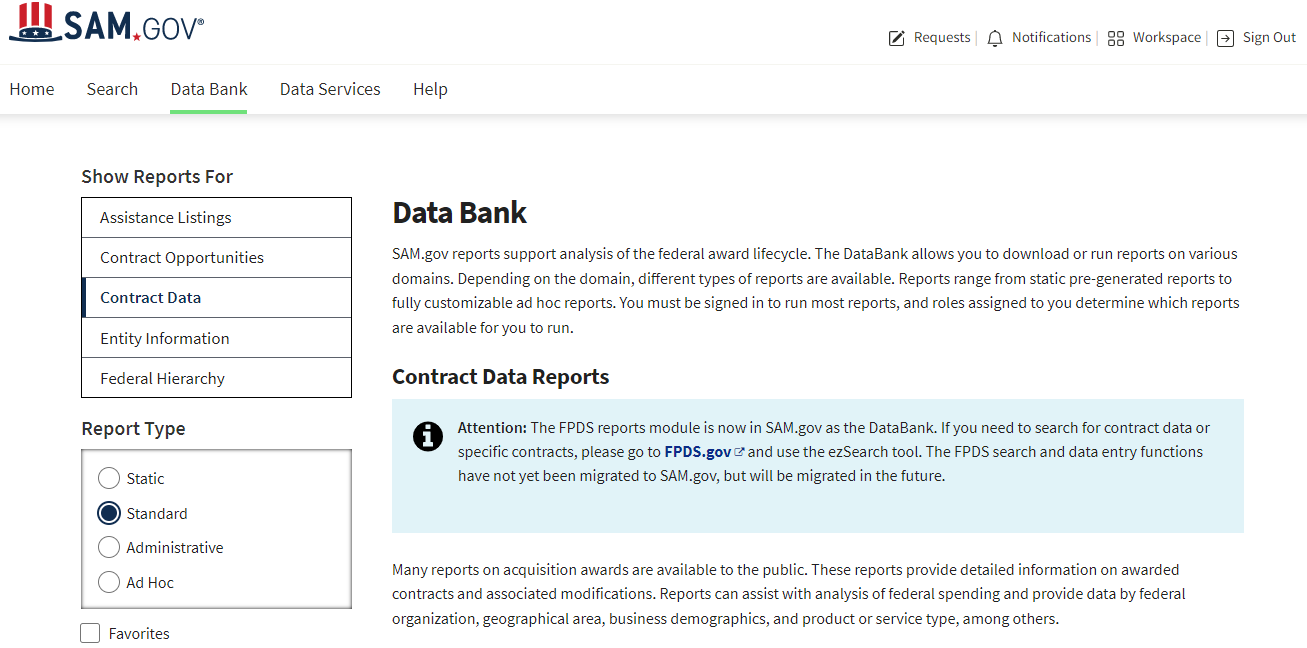
The first thing you’ll notice is that these reports are grouped in several pages. Thankfully, there’s a way where you can organize the list of contracts so you can choose the ones you want to be visible. This can be done by clicking on the star. You’ll know that you’ve selected a favorite once the star turns black. Be sure to check the “Favorites” on the bottom left corner of the previous image.
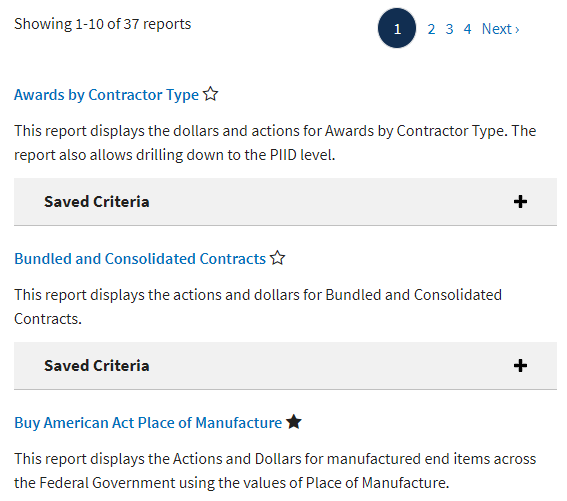
Report Criteria (Standard Reports)
Let’s dive into an example. On this page, we’ve selected a report known as the “Buy American Act Place of Manufacture.” This report shows the actions and dollars for manufactured end items across the federal government.
To start, enter any fiscal year data range. These ranges can go up to 12 years. After selecting your date range, you’ll be given an opportunity to enter the organization code. If you know the agency you want to go after, you can type in the code number, or you can look up keywords of your intended agencies, such as “state” and you will have all the agencies listed that contain departments with the name “state.” For this example, we’re going with 4700 which is the code for the General Services Administration (GSA).
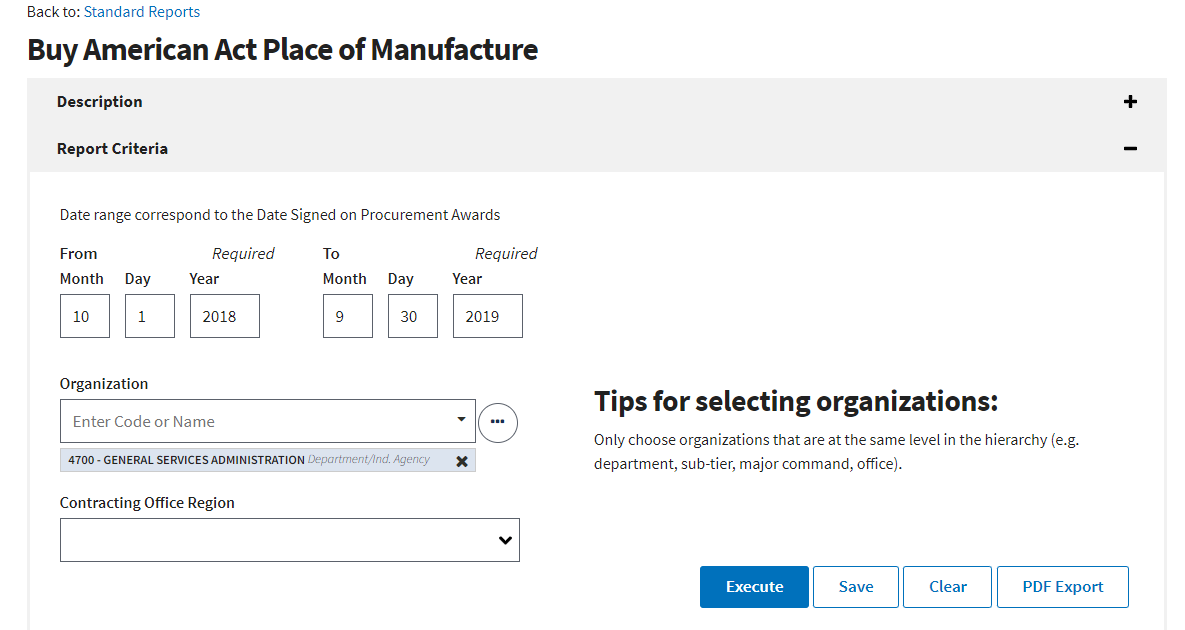
To see the report, click on “PDF Export” and a preview of all relevant documents will appear. You are then free to download or print these documents as needed. Of course, you can “save” the report as well as selecting “clear” if you’d like to make any corrections or view other reports. At the bottom section, there is a disclaimer as the information window as well as the Appendix. Click on the Appendix to see disclosures that comes with the reporting module.
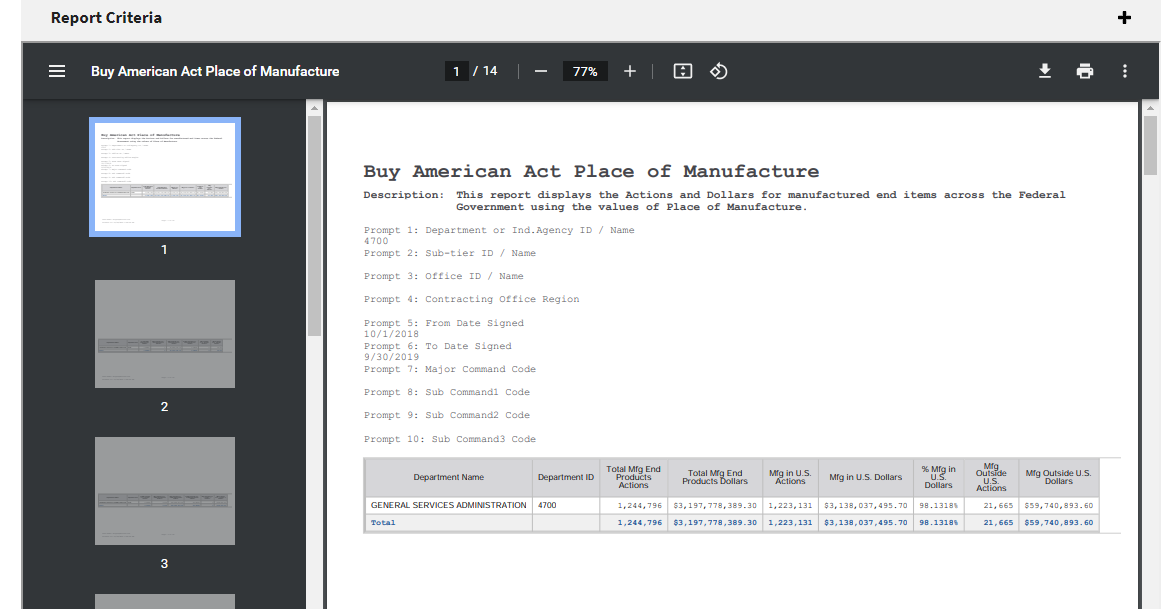
How to Run Ad Hoc Reports
Ad hoc reports offer the ability to select specific fields from the data to create a customized report. Ad hoc reports are most helpful for those with both experience of the data fields and an understanding of enhanced reporting tools. Similar to Standard Reports, you can pull up to 12 years along with 150,000 rows of data in a single report.
After selecting ad hoc reports in the same menu to the left where you could select standard reports, click on the “Award/IDV Information Report” option. This will then bring you the “my reports folder” page.
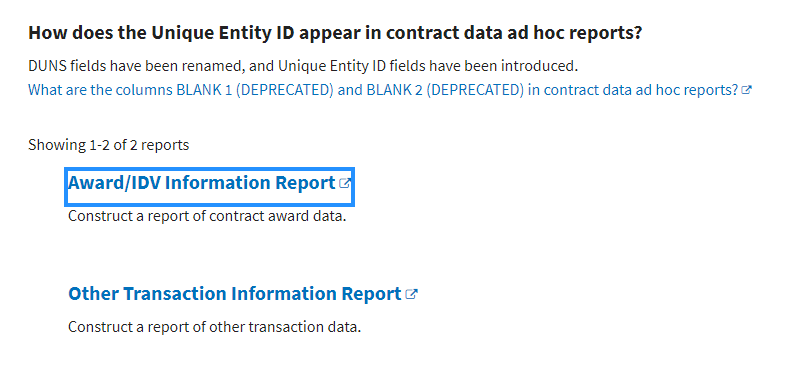
Everything you’ll see here will be blank until you create a folder below SAM.gov’s logo. There are 2 options available when creating a folder. A set of questions will appear to shape your ad hoc report once you’ve selected the “Report Builder” option.
In similar fashion to standard reports, you can fill out the relevant dates of your interest within each box. You may leave some of the date boxes blank if you’d like. It’s not necessarily required in some cases. Focus your attention on “Attributes of the Report.” These attributes can be items such contracting department ID, contracting department names, etc. Double click on the name to make your selection. To add more attributes, be sure to use the search bar engine and type your relevant keywords.
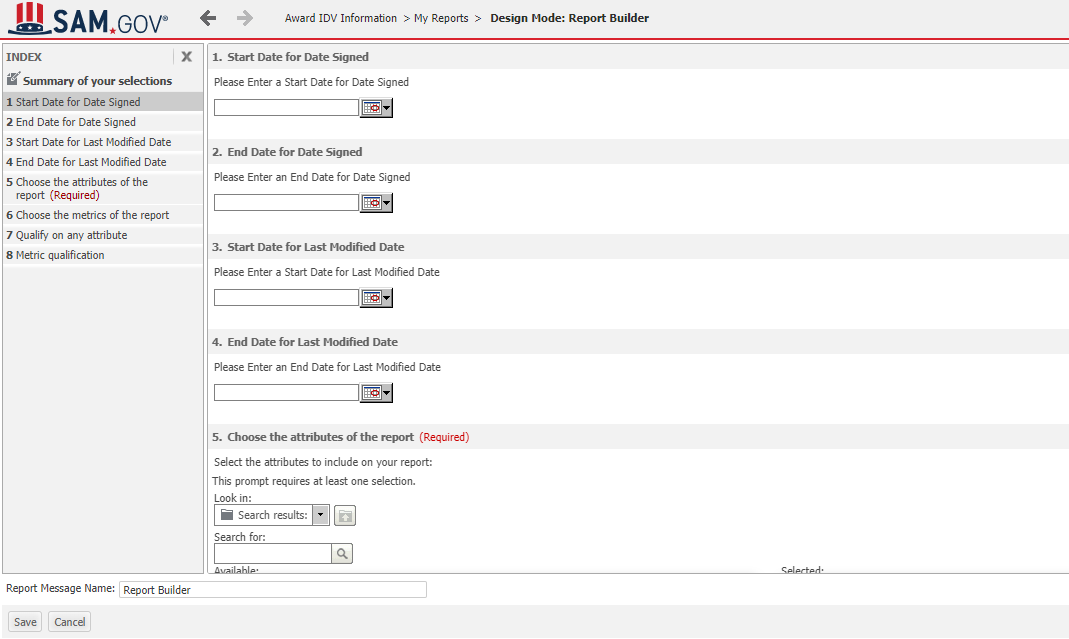
The same concept can be applied to with the “Metrics” tool of your report.
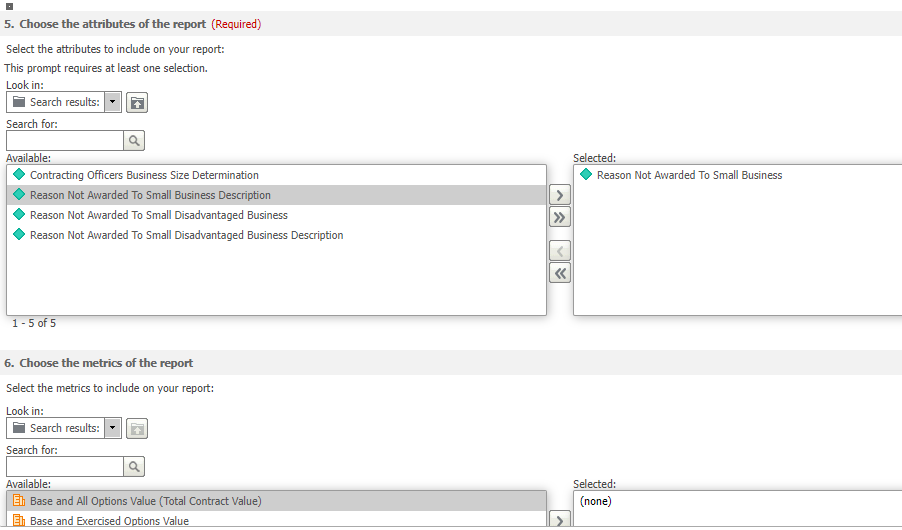
Carefully go through the remaining metrics and data entries on the report. You can always go back and make changes. On the bottom left corner of the page, you can hit the save button and create a name for the report.
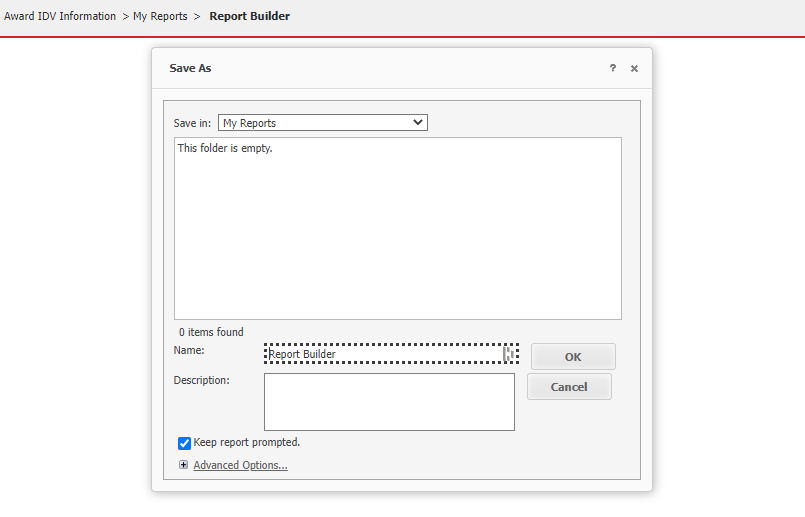
Click “Ok” to be given the option to run newly saved report. Take note that SAM.gov’s website is very time sensitive. Not being active for quite some time may sign you out and your report could be lost.

After your report has been saved successfully, you can access and review your file back on the home page. You can create as many reports listed as you’d like.
Do You Need Further Help Navigating Through SAM.gov’s Data Bank Tool?
We just covered quite a bit—remember that consolidating information through standard and ad hoc reports are great ways to access some the most pertinent information when identifying your market.
Are you still looking for more information regarding the Data Bank tool on behalf of putting together standard and ad hoc reports? One of our consultants will be more than happy to help. Putting together reports on SAM.gov may not be the only process you have a question about. We understand that keeping up with what SAM.gov has to offer can be frustrating. Our skilled experts and consultants are also here to ensure that your SAM registration is up to date.





